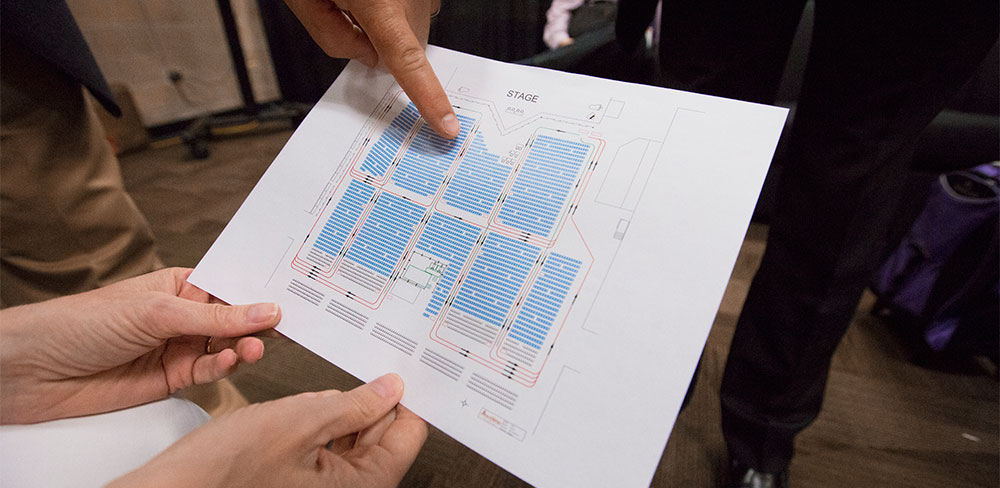
Adventist Review/ANN
A secret ballot system has been installed for Wednesday’s ordination vote that will offer the most fair and secure voting process possible, General Conference officers said.
“We have tried to be transparent, honest and thoughtful, and to ensure the privacy of the vote to the best of our ability,” said Nancy Lamoreaux, chief information officer for the General Conference and organizer of the logistics for Wednesday’s vote.
Delegates at the General Conference session in San Antonio, Texas, will be invited to vote at 4:30 p.m. following a day of discussions on the issue of whether each division of the Seventh-day Adventist world church will be allowed to decide for itself whether to ordain women to the gospel ministry in its territory, according to an agenda approved by the General Conference delegates on the first day of the session.
Officers from the General Conference’s Secretariat, which oversees the balloting process, will preface the secret ballot with an explanation to delegates about how the vote will take place.
Delegates then will be dismissed by row and form lines at 14 scanning stations situated on the main floor of the Alamodome stadium.
Each delegate’s badge, which includes a barcode, will be scanned by an attendant, and a General Conference auditor will then hand a ballot to the delegate.
“It’s important that they are verified as a delegate,” Lamoreaux said.

The secret balloting system was prepared well in advance of the General Conference session as a backup in case an electronic voting system didn’t work GC officer said. The e-voting system, which debuted at the GC session, proved problematic, and delegates voted to no longer use it in a Sunday afternoon decision.
“From the beginning we had a backup plan in case the electronic ballots didn’t work,” said Myron Iseminger, undersecretary of the General Conference. Secretariat oversees voting at GC session.
“It’s not something that we dreamed up last night,” added Lamoreaux. “These were preprinted before we got here, and they have been kept under lock and key.”
The ballots are printed on special paper, cut to the size of a half sheet of letter paper, and divided in half. One half contains the word “Yes,” printed in five languages, and the other the word “No,” also in five languages. The languages are English, Spanish, French, German, and Portuguese.
Each half has a box that delegates can check with a pen.
Delegates will be invited to follow their closest aisle to the front of the stadium to deposit their ballots in collection boxes. The four collection boxes will be security fixed and have clear walls through which the cast ballots can be seen, Lamoreaux said.
“The voting process will be quiet and prayerful,” she said. “Music will be played, and people will be asked to refrain from conversation. We will try to keep it as respectful as we can.”
Delegates can mark their vote on the ballot while walking to the collection box or at special tables set up near the ballot boxes.
“It will be very clear where to mark ‘yes’ and ‘no’ on the ballot,” Iseminger said, “because we want every vote to count.”
After all ballots have been deposited, General Conference auditors will empty them onto tables at the front of the stadium.
“We won’t start counting until everyone is done,” Iseminger said. “We don’t want the counting process to influence anyone’s vote.”
The auditors and officers of the General Conference’s Secretariat will organize and count the ballots and report the results to the chair of Wednesday’s meeting, outgoing General Conference general vice president Michael L. Ryan.
He will announce the results publicly.